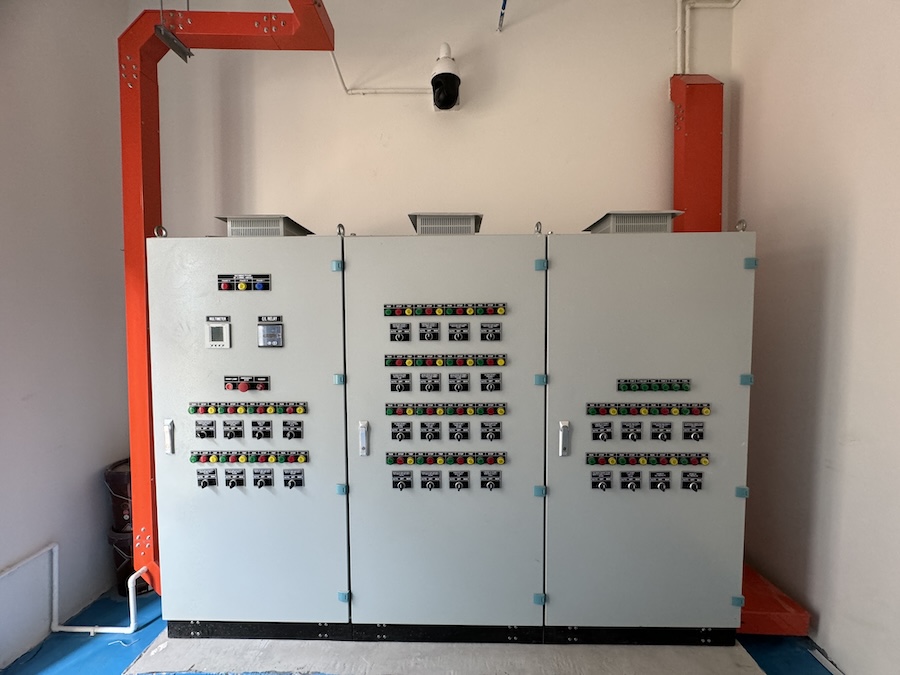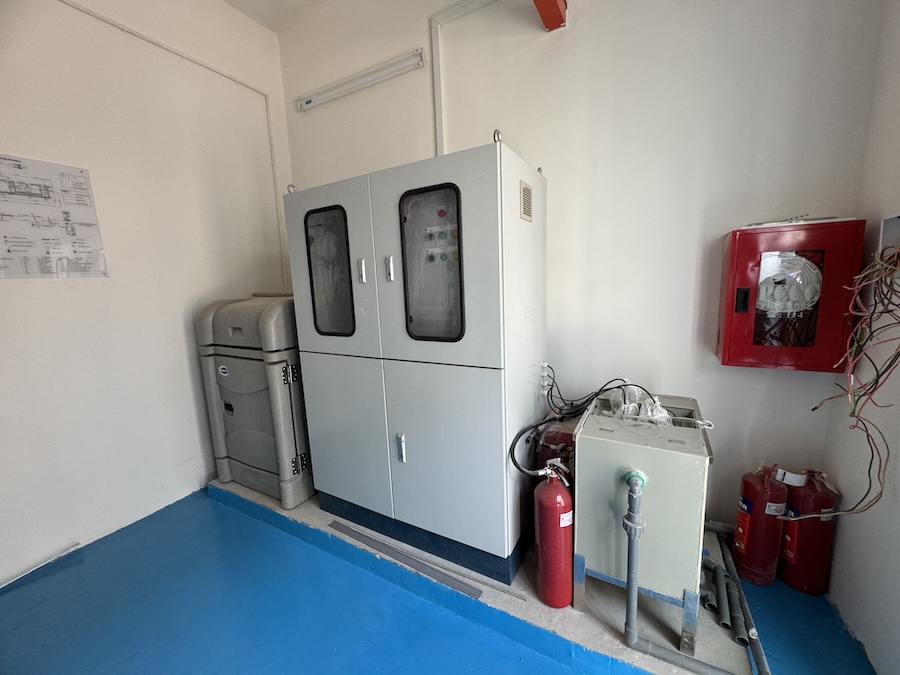In the context of strong urbanization in the East of Ho Chi Minh City, modern real estate projects not only need to meet residential needs but also ensure sustainable and environmentally friendly development. The Saigon Binh An - The Global City Thu Duc project is a typical example of that trend, when the investor has focused on investing in a centralized wastewater treatment system at station 5 with a capacity of up to 1,600 m³/day. This is an important solution to ensure a healthy living environment for residents and strict compliance with regulations on urban environmental protection.
1. Project Introduction: Saigon Binh An - The Global City Thu Duc
-
Project Name: The Global City Thu Duc (new name) – Saigon Binh An (former name)
-
Capacity: 1,600 m³/day (Station 5)
-
Investor: Masteries Home Group
-
Project Address: Do Xuan Hop Street, An Phu Ward, Thu Duc City, Ho Chi Minh City
-
Contractor: Dai Nam Environmental Solutions Co., Ltd.
-
Contractor Address: 144 Chu Van An Street, Ward 26, Binh Thanh District, Ho Chi Minh City
The Global City Thu Duc is a prominent high-end residential project located at the heart of Thu Duc City – an area experiencing rapid infrastructural and economic growth. With its modern design, green living spaces, and world-class amenities, The Global City sets a new standard of urban living that harmonizes convenience and tranquility. It is an ideal choice for those seeking a dream home or a sustainable investment opportunity in the Eastern part of Ho Chi Minh City.
Situated on a major arterial road connecting key areas of Ho Chi Minh City, The Global City Thu Duc boasts a strategic location with excellent regional connectivity. Within minutes, residents can access universities, high-tech parks, and shopping centers, ensuring strong potential for property value appreciation. The Global City is not only an ideal residential area but also a sustainable, high-return investment for savvy investors.
With a focus on sustainable development, investors at The Global City Thu Duc pay particular attention to environmental protection alongside quality of life and investment value. Building a centralized wastewater treatment system that meets stringent standards is a crucial step to ensure eco-friendly operations, contributing to urban ecosystem preservation.
Dai Nam Environmental Solutions Co., Ltd. is honored to be selected to implement the wastewater treatment system for the entire project. With extensive experience and a strong reputation in the field, Dai Nam is committed to providing effective, sustainable, and cost-optimized technical solutions, partnering with the investor to create a modern, green, clean, and beautiful living space for the future community at The Global City.
2. Wastewater Treatment System Overview
2.1 Collection and Coarse Screening Tank
Before entering the tanks, wastewater passes through a coarse screen rake to remove large debris (10–20mm in size), preventing pump clogging and pipe blockage. Sand in the influent settles at the tank bottom and is pumped to a sand drying yard. After sand removal, wastewater is pumped to the oil and grease separation tank.
2.2 Oil and Grease Separation Tank
Before entering, wastewater passes through a rotary drum fine screen to remove debris larger than 2mm. Domestic wastewater usually contains a certain amount of oil and grease, which must be removed to meet Column A standards of QCVN 14:2008/BTNMT. The separation tank is designed with two compartments, operating on a gravity principle where oil floats to the surface due to its lower density and is separated from the water. Wastewater then flows by gravity into the equalization tank. Waste oil and collected debris are periodically collected by authorized waste management units.
2.3 Equalization Tank
The equalization tank is designed to buffer variations in flow and pollutant concentrations. Submersible mixers installed at the bottom ensure even mixing to prevent anaerobic decomposition, thus limiting odor generation.
2.4 Anoxic Tank
In the anoxic tank, denitrification occurs, releasing nitrogen gas into the environment. Nitrate- and nitrite-rich wastewater is fed into the tank through a return flow from the biological tank, along with activated sludge to ensure adequate biomass for treatment.
2.5 Biological Tanks 1, 2, 3
The first biological tank applies an aerobic suspended growth process with carriers. Microorganisms adhere to the carriers and break down organic pollutants. Blowers supply oxygen via fine-bubble diffusers at the bottom of the tanks, promoting biological activity and decomposition of organic matter into simpler inorganic compounds.
2.6 Secondary Settling Tank
After biological treatment, the wastewater contains suspended activated sludge. The settling tank separates this sludge from the water by gravity. Water flows into a central inlet, disperses evenly, and suspended solids settle to the bottom, while clarified water flows over weirs into the intermediate tank.
2.7 Intermediate Tank
Clarified water flows by gravity into the intermediate tank, which buffers flow for subsequent filtration. Disinfection chemicals (chlorine-based compounds) are dosed into this tank to eliminate pathogenic microorganisms.
2.8 Sand Filter Tank
Water from the intermediate tank is pumped through a sand filter. During filtration, suspended solids are captured within the sand media. The filter undergoes backwashing to remove accumulated solids, which are returned to the equalization tank. The filtered water then proceeds to the fine filtration system.
2.9 Fine Filter Column
The fine filter column removes residual suspended solids larger than 5 microns. When the pressure differential across the filter reaches 2.5 bar, filter cartridges are replaced. Pressure is monitored using gauges installed before and after the filter. Water then flows to the UV sterilization system.
2.10 UV Sterilization System
The UV system completely eliminates bacteria before the treated water is discharged to the monitoring channel.
2.11 Effluent Monitoring Channel
Treated water meeting standards is directed to the monitoring channel. According to Circular No. 10/2021/TT-BTNMT, centralized treatment plants with a capacity greater than 1,000 m³/day discharging directly into the environment must have an automatic, continuous monitoring station. This monitoring station ensures consistent compliance with Column A standards of QCVN 14:2008/BTNMT.

The trash rack is a device designed to remove coarse waste such as plastic bags, leaves, and fabric scraps
The adsorption tank is used to treat odors, color, and remaining organic matter; the chemical dosing tank supplies coagulants, pH-adjusting agents, and disinfectants
The central control panel in the wastewater treatment system automatically operates and manages all equipment, ensuring efficient and stable system performance
The fine filtration unit removes remaining suspended solids before the treated water is discharged or reused, ensuring high water quality and compliance with environmental standards
The online monitoring system continuously tracks the quality of treated wastewater, ensuring compliance with environmental regulations and discharge standards
Investing in a wastewater treatment system with a capacity of 1,600 m³/day at The Global City Thu Duc demonstrates the investor’s strong commitment to environmental protection, while enhancing the green infrastructure network for the entire area. This is also Station 5 in a series of wastewater treatment plants implemented by Dai Nam Environmental Solutions, marking a significant step in supporting real estate projects toward building sustainable, modern, and community-responsible living spaces.




